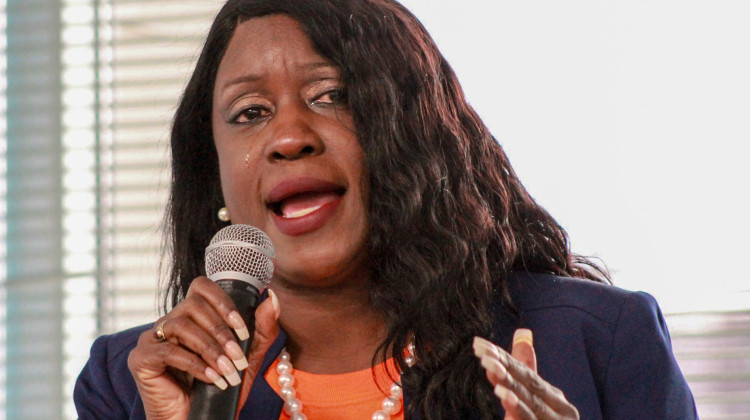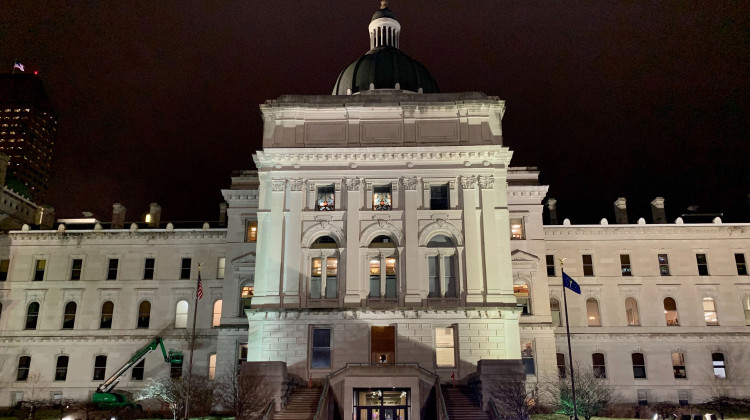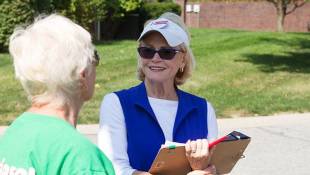INDIANAPOLIS – November’s election will mark the first major change to the Marion County and City of Indianapolis political structure since the creation of Unigov in 1970. While the city and county are still served by the same joint government, the removal of the City-County Council’s four at-large seats will mark a new chapter in Indianapolis politics.
Unigov is the shared political system of Marion County and Indianapolis. The county is divided into 25 local districts represented on the City-County Council. Although the ballot is losing the four additional at-large councilor elections, Marion County residents will still vote on the mayor of Indianapolis and their local district councilor on Election Day in November.
Indianapolis’ relationship with Unigov extends back as far as the 1967 local election. Dr. Ted Frantz, director of the Mayoral Archives at the University of Indianapolis, credits then-newly-elected Indianapolis Mayor Richard Lugar with beginning the legwork to enact Unigov.
“[The mayor and his staff] were studying all kinds of different problems and [Lugar] really was the expert on this idea of metropolitan consolidation – which became Unigov,” Frantz said.
Indianapolis does not enjoy what Frantz refers to as “home rule.” That means that the state legislature must approve any changes to the city’s political structure or budget.
In 1968, when his fellow Republicans dominated the state elections, Lugar saw his chance to enact his idea of city-county consolidation and began lobbying at the Statehouse. The Indiana House and Senate passed Lugar’s proposal in 1969 and Unigov went into effect Jan. 1, 1970.
The new political structure established a City-County Council with 29 members, 25 from local districts and 4 at-large seats voted on by all Marion County residents. Frantz said the new council structure was meant to improve voter representation.
“Prior to Unigov, all of the seats were citywide election,” Frantz said. “The argument was that you would actually be getting better representation of the neighborhoods with Unigov because you would have some at-large and some representing particular neighborhoods and particular places.”
The districts have shifted and been redrawn as population grew and declined over the past 45 years, but the importance of the at-large seats remained constant. While they were intended to provide representation for all Marion County residents, they also gave the mayor political padding on the council.
“Most of the people who lobbied for at-large seats [to be included in Unigov] thought that it would help the mayor,” Frantz said. “In any normal circumstance if you win the top office, you’re going to have a strong party structure and the people running countywide would also win.”
For 40 years, the pattern held: whichever party won the mayor’s office also won a majority of at-large seats. Then came 2011, when Republican Greg Ballard was re-elected mayor, but Democrats won all four at-large seats and a 16-13 majority on the council. Those results have led to some of the recent friction between the mayor’s office and the council.
That friction led to the recent push to remove the at-large seats. In 2013, the Republican-dominated state legislature passed a bill eliminating all four at-large seats. Democrats claimed the move would hinder voter representation and unfairly shift the balance of power back across the aisle while proponents said a smaller council would boost government efficiency.
The loss of the seats came in the middle of another Unigov controversy over district boundaries. An outgoing Republican majority on the 2011 council redrew the lines of all 25 districts after the 2010 census – as is required by law. However, Democrats argued the new lines unfairly favored the GOP and took the issue all the way to the Indiana Supreme Court where a 2014 ruling allowed the new lines to remain.
Despite the changes, Unigov still holds a strong influence on Indianapolis politics. The results of those changes will be seen after the Nov. 3 election.
 DONATE
DONATE







 View More Programs
View More Programs




 Support WFYI. We can't do it without you.
Support WFYI. We can't do it without you.